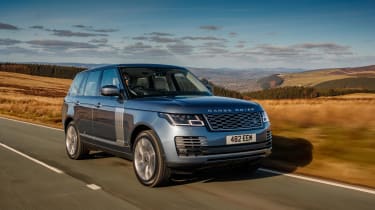Range Rover (L405, 2012-2021) review - MPG and running costs
The P400e plug-in hybrid has impressive numbers, and kept to short-range driving can be quite efficient. The other models less so.
No matter how you look at it, running a Range Rover is going to be expensive. How expensive depends on engine choice, obviously, but even less frequent fills in the diesel models are going to have you see the numbers roll into three figures at the pumps. The P400e hybrid might lay claim to some impressive on-paper numbers, but like all plug-ins, once you’re out of the electricity stored in the 12.4kWh battery pack, you’ll essentially be driving around in a 2.6-ton SUV with a small petrol engine. Drive with the batteries brimmed on small journeys and you will see tangible savings. However, you’ll struggle to match the claimed 82.3mpg.
The D300 and D350 are also more efficient than the previous V6 and V8 diesels they replace thanks to the new straight-six engine and mild-hybrid system. Figures for both are 32.5mpg and 30.6mpg, which should be more achievable thanks to the more real-world WLTP testing procedure.
The petrol models are somewhat less impressive, with the P400 petrol rated at 26.4mpg despite its own mild-hybrid system, while the V8s unsurprisingly dip below 20mpg at 19.9mpg for the P525 and 18.6mpg for the top-level P565 SVAutobiography Dynamic. It’s also worth noting these figures are ‘best case scenario’ too, as the new WLTP cycle generally gives you a range of miles-per-gallon figures rather than a single static one.
Other consumables such as tyres and brake pads and discs will also run into big numbers due to the Range Rover’s considerable mass. A set of OEM 21-inch tyres (the most common wheel size across the range) will set you back the best part of £1200-1600.



